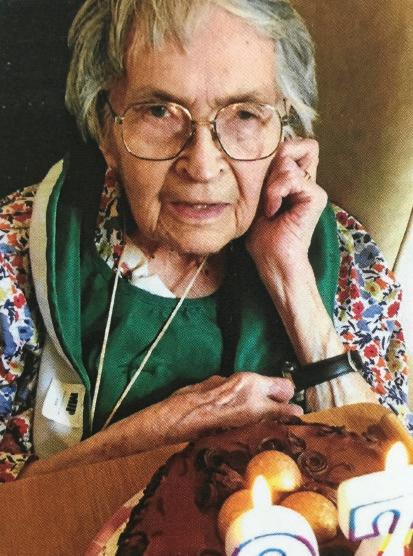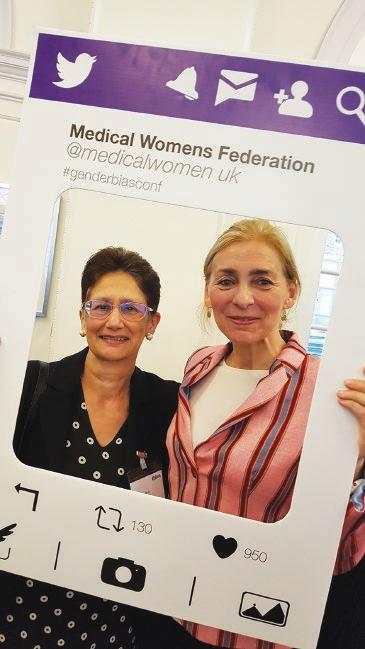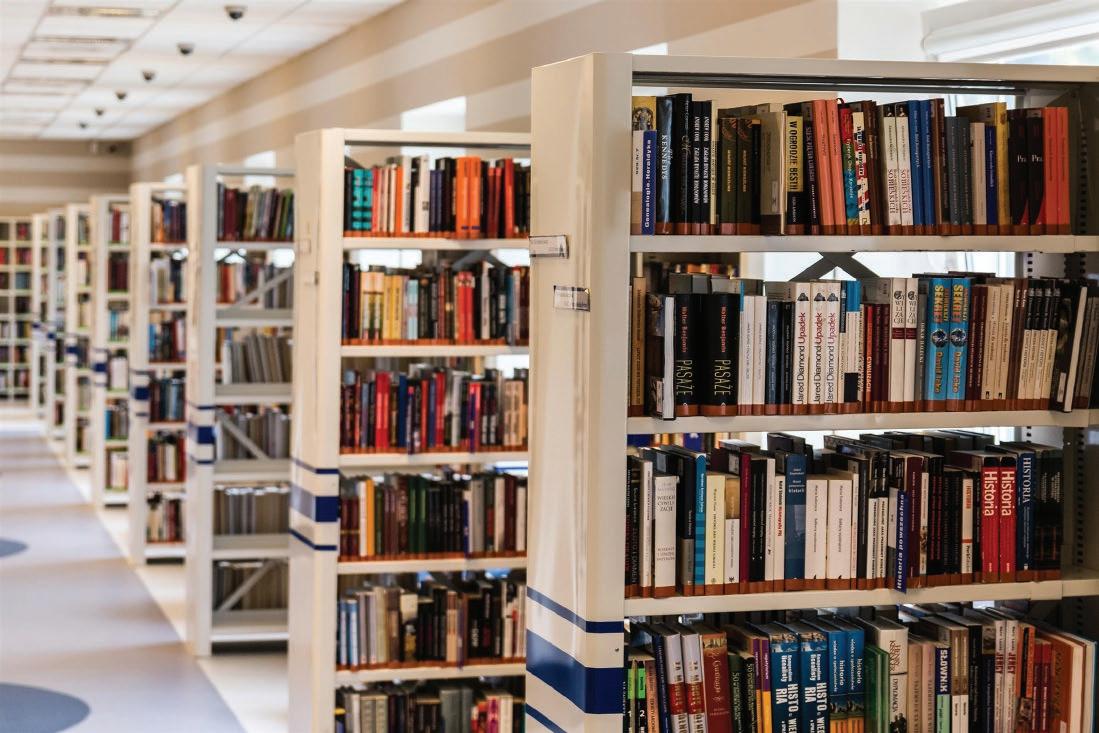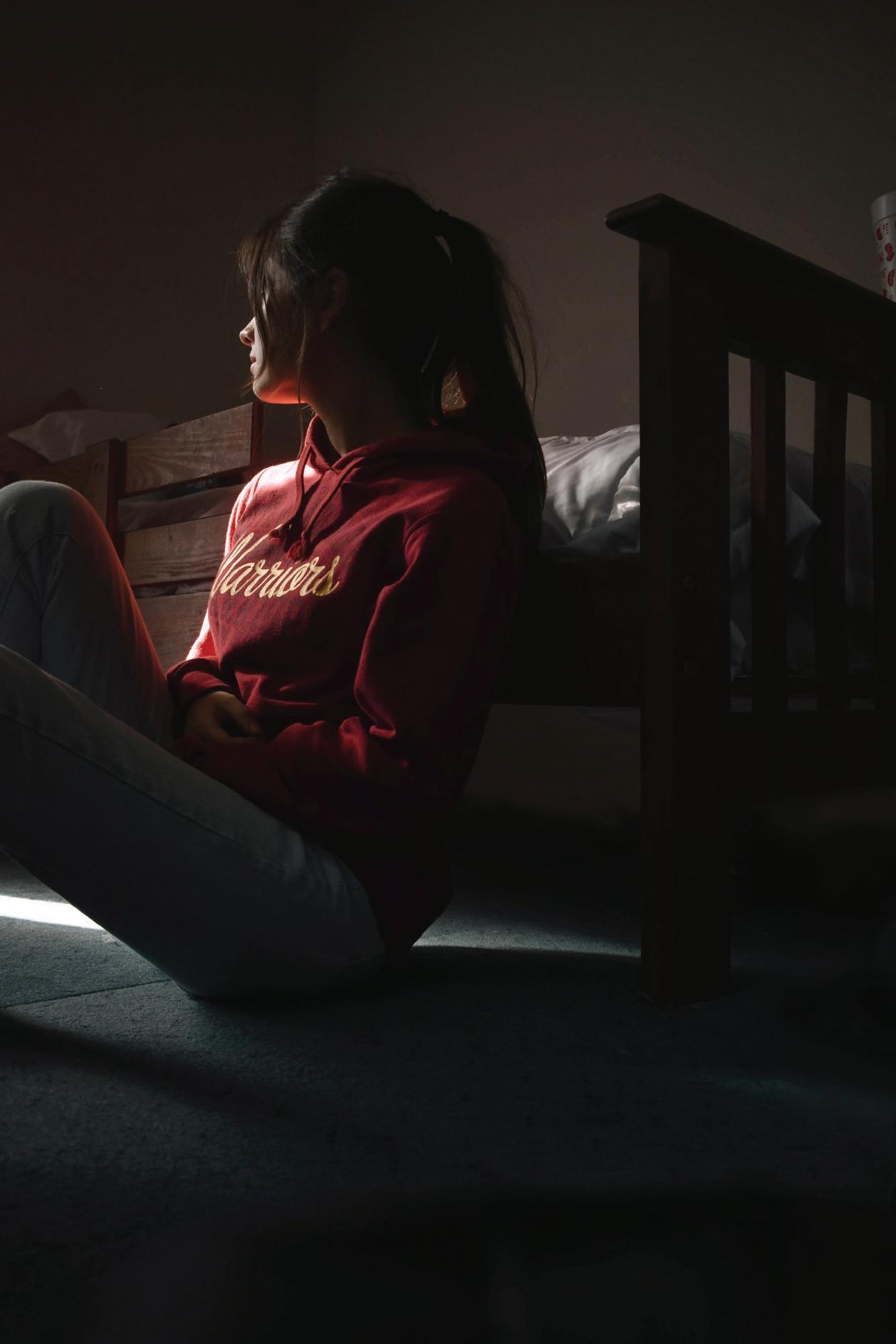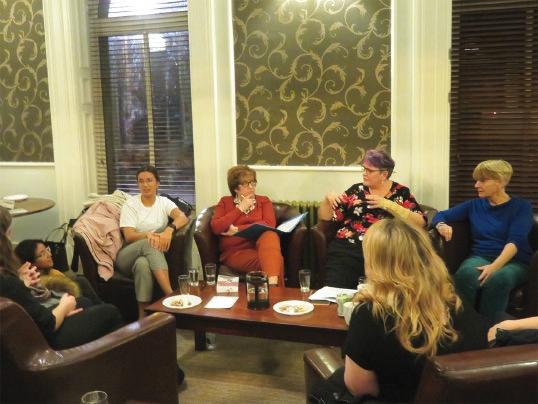
6 minute read
Unwind: Creativity and healthcare
Empower the spirit: creativity and healthcare
Jo Bowen is a Psychiatrist now working in private practice specialising in stress and trauma management for doctors. Jo has published research in the field of stress and illness causation. In 2019 she co-founded cRxeate. This is an online forum which aims to inspire all doctors in the empowerment of their creativity.
In this article I will explain how I think the concept of creativity might be understood and applied to our everyday lives as women doctors. Along the way I will ask you some questions. I also want to introduce cRxeate, a project we have developed to empower creativity in all doctors and medical students. When I was working as an NHS Psychiatrist in the nineties I grew to realise that the word creativity was hardly ever mentioned by those delivering healthcare. The Chelsea and Westminster Hospital was one of the first to pioneer programs of arts in hospital settings and I recall how energised patients and my medical peers felt on setting eyes on some rather big colourful mobiles hanging off the foyer ceilings. They added spritzers of joy to signify that what happened there was worthy of an art installation. Nowadays, it’s hoped that creativity in healthcare is very much on the up! Arts for health organisations are taken seriously and the famous Wellcome Trust is a powerhouse in the field of medical humanities; #MedHum on Twitter. We see interest evolving in what is termed ‘social’ prescribing: exercise, hobbies, being in nature are all increasingly evidence based and valued in primary care. However, when it comes to the explicit valuation of creativity for doctors themselves there are still plenty of personal and professional barriers to overcome. One comment sums up a tendency to see creativity as an optional extra: as doctors we do a ‘relatively earthbound job’ 1 . How can we doctors now argue against such creativity antagonists and why is it important to do so? Creativity like ‘stress’ is a nebulous concept. The term has to be carefully defined to be able to argue for it even if we begin by agreeing it involves a mental process we do not yet fully understand. TED talks on the subject feature a range of definitions implicating diverse ways of thinking and imagining. In our lives, where we must be inventive in order to find change that we want, it is therefore possible to see that creativity may be understood to be an essential part of being human. On this take, the creativity process is instrumental in allowing us to adapt and survive. Our ability to solve complex problems, to tolerate uncertainty and to direct our lives may be directly proportional to the quality and quantity of creativity we can muster. The heavy demands of our multitasking lives as individual women doctors come to mind here. Creativity is therefore most definitely not only for the likes of a creative genius - a Frida Kahlo or an Ada Lovelace. Nor is it an optional extra if we want to determine how well we live. So if we accept that creativity is about what we all do naturally, we can admit its vital role in our self-enrichment. Yes, it can lead to excellence in our learning and performance, even original outputs, yet it is also a part of our good enough functioning in our everyday life. There is a growing evidence base that our perception of our surrounding spaces benefits our functioning. Social aesthetics research and creative space projects focusing on how we can set up creative thought 2 have also begun to demonstrate the added value of creativity. All sorts of arts and hobbies are increasingly recognised to help ‘flow’, a core concept in creativity theory 3 . Arts and hobbies, as shown by large population surveys, are understood to help with numerous angles of wellbeing: self-expression, joy, new learning, sociability, relaxation and ‘headspace’ feature strongly there. So the question I ask any doctor thinking about their own creativity is: how does your clinic or office space appeal to your most frequently used senses? Are you working optimally there as a doctor? Do those workspaces where you spend so much of your time feel in any way beautiful to you or your patients? Do they suit your femininity or masculinity and how might that matter to you? Then also: how do you find immersion in ‘flow’ when you need it? Next, I turn to the business of sleep, something we should be prioritising for a third of our day, if current research is to be reflected in our practice. Research interest is increasing in emotional signalling, traumatic experience processing, and memory banking during different sleep phases and intriguing default brain systems. The physiological methodology, Eye Movement Desensitisation and Reprocessing (EMDR), is well evidenced to treat psychological trauma and is hypothesised to be emulating REM activity. Furthermore, mental rehearsal is shown to be effective as virtual exposure within clinical hypnotherapy and creative visualisation. MRI brain scans are beginning to show us some awesome potentials of our imagination and thinking modes away from verbal activity. So, the questions about creativity I ask here concern how you are seeing, learning from and remembering your everyday experiences at work and home? In particular, are you getting good enough sleep, despite on calls or shifts, and hormonal fluxes, anxieties, conflicts and other caring responsibilities in your life? Do you daydream? Do you prioritise switching off? When medical trainees attend their 6 sessions of counselling, I have noticed a common trend. After a while, many would say to me something like “I want my heart to sing again” – they reflect that their passion for medicine had dulled. Although such a feeling of loss involves multiple causes, I have found that attention to modes of creativity can help much. As women doctors, we can make the most of our thinking and imagination as we listen and respond to what new we need for ourselves. A feeling of self-erosion and moral distress is a problem for us when we are so often achieving care for all except ourselves. How we look and feel in a world which might not reflect our values or sensory needs, how we get tired and isolated, even ostracised, how we take emotional risks, empathise, teach and support others and as seniors, bring in change we care about – that’s all where our creativity can come in to help us thrive. In an article about wellness and our potential, it is important to remind all readers of the signposts to currently available care for doctors 4 . With a further important reminder that many in our profession are working to reduce the stigma of getting care for doctors themselves 5 . We cannot use our creativity fully if we don’t feel well enough or in a good enough space to connect with it in the first place. Lastly, I want to mention a new creativity resource called cRxeate which we have developed for doctors, now that creativity in medicine is getting more recognition 6 . Do look in and join us all there if you would like. Together we hope to promote the everyday value of creativity to all in healthcare for an empowered future. I imagine many more initiatives to come. Let your creativity flow and flow.
References
1 Jackson N., Creativity in Medicine, The Higher Education Academy, October 2005.
2 The Health Design lab, Jefferson University, USA, ongoing.
3 How to enter the ‘flow state’ for effortless creativity. Davis M, 2018. https://bigthink.com/personal-growth/what-is-the-flow-state Accessed December 19, 2019.
4 Wellbeing support services. BMA, http://bit.ly/33DKhNL Accessed December 19, 2019
5 Doctors Support Network, Anti Stigma Campaign https://www.dsn.org.uk/ANDME_anti_stigma_campaign Accessed December 19, 2019

